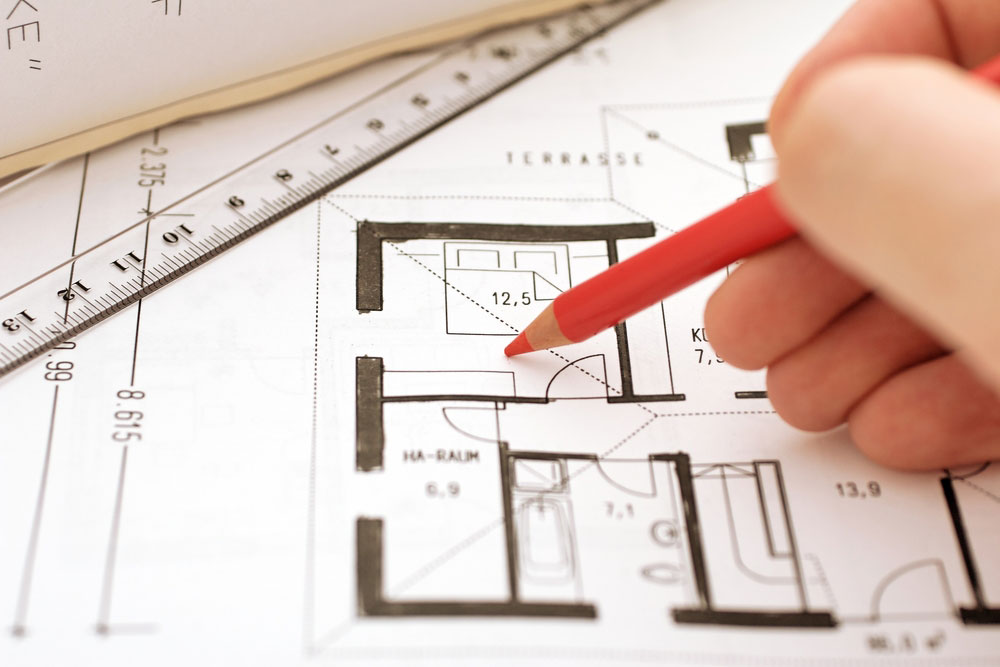The 7 Most Important Design Processes in Architecture
Design processes in architecture are most important for designers to know what their clients want in a building. Architects must understand the design process and be able to guide their clients through that process. The article covers seven proven, effective methods to create great architecture.
To develop great design processes in architecture, you must design everything right. Otherwise, your design will be weak. This is true whether you design buildings, websites, or any other digital product. However, when it comes to architecture, there is one especially important thing. And that’s a process. The seven processes I describe are the most effective ways to improve your design.
Every project improves your design. The important things to remember in any format are the big picture and the details. This is a shortlist of the seven most important processes in architectural design.
Architectural design is an incredibly complex discipline. It involves many fields, including engineering, drafting, design, construction, and more. However, these disciplines are brought together to create a cohesive whole.
In this post, we’ll look at some of the most important steps we take in architectural design, such as the overall vision, the details, and the process.

1. Visual design
This is arguably the most important part of the architecture. While you may not realize it, your brand is communicated through visual design. If you don’t have a logo, a website, a physical strategy, or a memorable brand message, you’re missing out on a major part of your strategy.
When designing a logo, you must consider what your audience wants from the logo. Is it simple? Is it colorful? Is it minimal? You must also consider what kind of branding you wish to convey and what makes your company unique.
Reading is the best way to learn about branding. This is the best way to learn about branding. Books will help you understand the basics and create your own identity.
Visual design is the most important step in design processes in architecture. This is because it determines how the building will look. It also sets the tone for the building and the overall impression that it gives. The visual design process is broken down into four steps.
The first step is planning. The initial sketch will determine what kind of structure you need. Then, you’ll use this information to determine the you’ll concept.
Conceptual design is the next step. It involves creating an aesthetic vision, such as a floor plan or model. This helps to guide the architect, interior designer, and other professionals as they start developing the project.
2. Interactive design
The most successful designs have the most engaging interactive components. Interactivity doesn’t necessarily mean that it’s fun to interact with the design. However, it should provide value for the user, regardless of whether they enjoy interacting with it.
Interactivity can be achieved through various methods, including motion, animation, and video.
For projects with a limited budget, interactive design can be the difference between an acceptable and an amazing project.
Interactive design means designing user-friendly, user-friendly, bitter words; it’s about ensuring the user experience is it’s, rather than creating something that looks nice.
It is a key component of modern web design. To make a website accessible to our target audience, you must ensure that everything on the page is easy to use, not just the website itself.
3. UI/UX design
As a designer, it’s your job to take a brief idea or a vague concept and turn it into something tangible that people can use.
You have to determine the user’s information to determine the user’s statement that they’re gett ng the right information, presenthey’rethe right way, at the right time, and in the right place.
When it comes to the UX of web pages, you first need to establish your users’ goals and then use those goals to guide users ‘. You need to understand how users will interact with your product and what information they need to perform tasks on your site.
When it comes to UI/UX design, there are two things you need to know. The first is to be organized. If you’re not organized, your designs will s you’re second to be methodical. This means planning your strategy, thinking, planning your design, thinking, and creating a layout that makes sense.

4. Brand ancreatingtity
The brand and identity are the foundation of any project. It is what makes your company or architecture unique, and it is what makes it memorable. A brand and identity must consistently convey a strong message across all communication channels.
It also needs to be simple enough to make sense to both your staff and the clients you work with.
An architect’s brand and identity is their unique architecture and persona.
It combines color, typography, imagery, and other elements that make an architect’s brand instantly recognizable.
Branding aims to create a strong visual identity representing your firm or practice. It should be memorable, professional, and, most importantly, fit your goals.
Think of it as a face. If you want people to recognize you when you’re out, you must have a unique and recyclable look. You must also know your strengths, weaknesses, and angles to frame your face.
5. Marketing and communications
Marketing and communications are an essential part of any company or organization. They can help companies grow, or they can be the thing that sinks a company into oblivion. When it comes to design, it is often a balance between marketing and communication. These two can go hand-in-hand. This is especially true in architecture because you need both to create a great design.
A good way to promote your design is to create something that will be shared. This can mean using social media, creating shareable content, or making videos.
The marketing and communications process is important for many reasons. First and foremost, it helps you communicate what you want to your clients. After all, if you don’t know what you’re trying to sell, how can’t you expect yourself to buy it?
If you’re working on a large project, you’ll have many stakeholders to consider. Styou’llder management is one of the most important processes in the project’s success.
6. Testing and quality as projects: The first step in any architectural design is to test and verify the overall design. This can involve creating several designs and seeing the best fit for the project.
In addition to the overall design, many small details need to be tested. For example, a window may have different styles and shapes depending on the size of the space. There are many other options, and they all have to be considered.
Before starting your next project, ensure you have all the information you need for testing and quality assurance. For example, when working on a new website, it’s important to have a complete set of wirelesses that will help ensure the best user experience.
You can also use a simple checklist to ensure you don’t miss anything important. In the event of a website redesign, having a set of guidelines will help you avoid repeating mistakes from the last round.
For example, I’ve recently had clients come to me with some questions, such as “How should we organize our menus?” and “Shouwe create a landing page for ev”ry pr” duct?” When you have all the information, “you can answer these questions and more.

7. Communication strategy
This includes the tea, the clients, and the stakeholders. I can’t emphasize this enough: if you don’t communicate with everyone involved, you are to fail.
This is also why communication is the first step in the design process. It’s a crucial part of any project.
When communicating with stakeholders, you should consider their needs, interests, and preferences. These are different things to consider when dealing with a big project or a small you’ret.
The same applies to your team. Each member has different preferences and experiences, so ensuring they have what they need to succeed is important.
The communication strategy is how you communicate your work to people. You can’t expect others to care about your work; can’t you clarify what it is and why it matters?
There are two main types of communication: internal and external.
Internal communication is how you tell other architects what you’re doing, why you’re doing it, and how you’re doing it. This is usually done through email and other informal interactions.
External communication is how you let people know what you’re doing, why you’re doing it, and how you’re doing it. You usually do this through your releases, articles, and other formal interactions.
How To Be A Professional Architect
Design is the final step in the architecture process. Once you have chosen the best location for your project, you are ready to design and ensure all the building codes are met. At this point, develop your ideas into a professional, realistic design.
There are three important steps in designing a structure. First, you must determine what type of building you will be creating. This will determine the scale of your design. For example, if you are making a house, you may want to draw a larger scale plan than if you are making a small commercial building.
Second, you must determine what kind of building it will be. Will it be a single-family home? Or will it be a commercial building? This is important because each building type requires a different design. A commercial building needs a more detailed design and construction than a single-family home.
Third, you must ensure it is realistic and practical. This step is the most important in all of the design processes. You cannot design a building that is impractical or unrealistic. It must be a building that is feasible and can be built.
Frequently Asked Questions (FAQs)
Q: What’s the biggest misconception about architecture?
A: The biggest misconception about architecture is that it happens overnight.
Q: What’s the best thing about being an architect? architecWhat’sThe best thing about being an architect is designing a building and seeing it come to life.
Q: What’s the biggest challenge with being a what’s?
A: The biggest challenge is getting the client to agree to your vision. Sometimes, you must be firm and tell the client, “That’s how it’s going to be.”
Q: What’s “That thing? Is it being an art? “What’s The worst thing about being an architect is the competition. There are so many people out there who want to be an architect, and the competition is tough.
Myths About Architecture
1. Designers only work for big firms.
2. Archit cts are the best designers.
3. It takes a long time to get a good design.
4. Only architects do architecture.
5. The design process takes forever and is boring.
Conclusion
I hope that this article has inspired you to try something new. As an artist, I know staying motivated when learning new things is not easy.
However, when you’re passionate about what you do, finding the motivation to learn new skills and apply them is easier. This post lists all the resources that I’ve used to learn to program.
So the most important thing you can do is start.
Don’t get stuck in the rut of following the sDon’tld pattern.
Please make it a point to always look for new ways to improve yourself.











